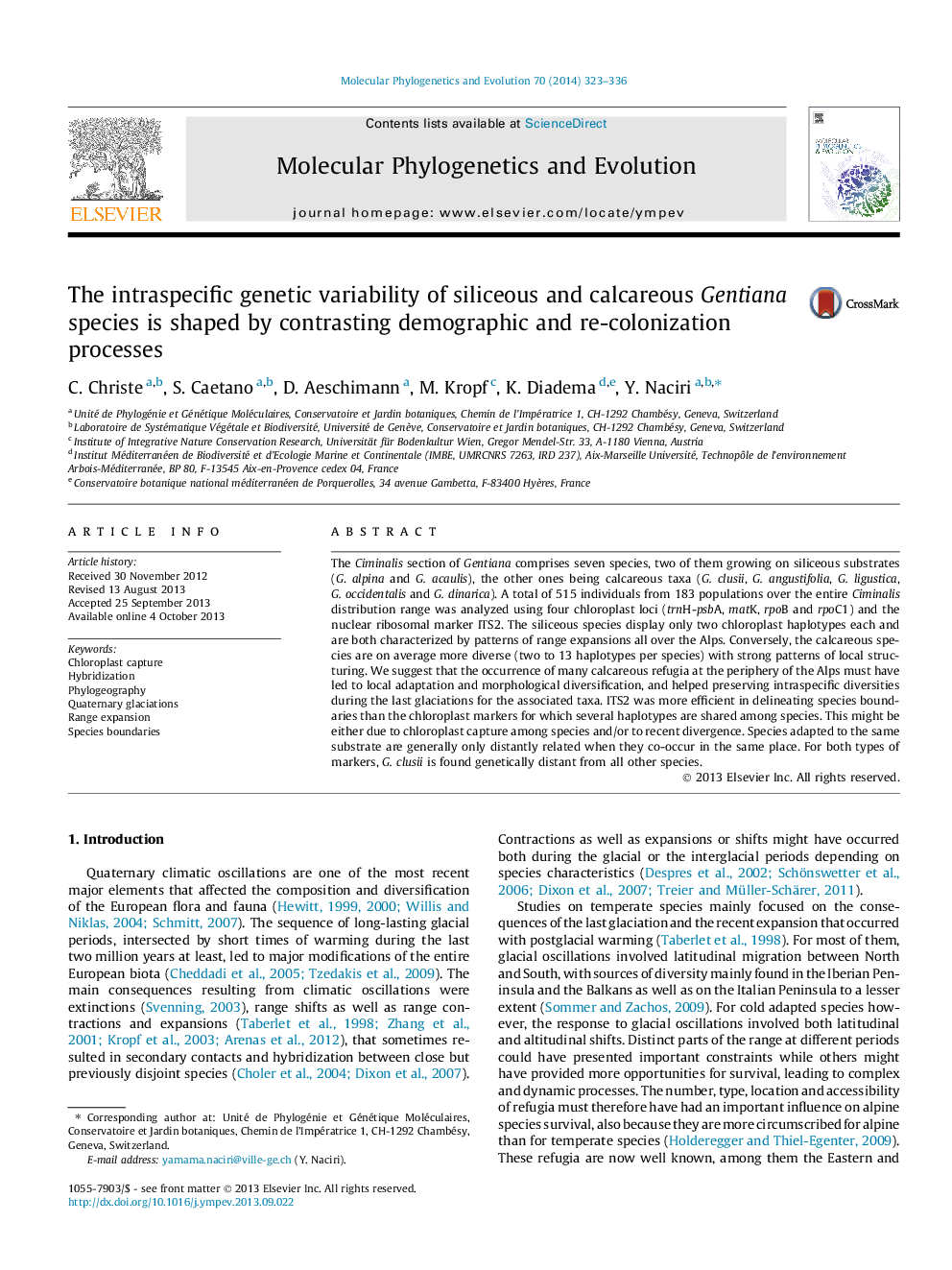| کد مقاله | کد نشریه | سال انتشار | مقاله انگلیسی | نسخه تمام متن |
|---|---|---|---|---|
| 5919386 | 1570825 | 2014 | 14 صفحه PDF | دانلود رایگان |
- We analyzed all 7 Gentiana species of the Ciminalis section (515 individuals) for one nuclear and four chloroplast markers.
- The two siliceous species showed typical signs of spatial expansions over the Alps.
- The calcareous species retained more diversity than the siliceous ones due to the existence of many peripheral refugia.
- Chloroplast captures among species occurred several times, leading to incongruences between nuclear and chloroplast data.
- ITS2 was more efficient in delineating species boundaries than chloroplast markers.
The Ciminalis section of Gentiana comprises seven species, two of them growing on siliceous substrates (G. alpina and G. acaulis), the other ones being calcareous taxa (G. clusii, G. angustifolia, G. ligustica, G. occidentalis and G. dinarica). A total of 515 individuals from 183 populations over the entire Ciminalis distribution range was analyzed using four chloroplast loci (trnH-psbA, matK, rpoB and rpoC1) and the nuclear ribosomal marker ITS2. The siliceous species display only two chloroplast haplotypes each and are both characterized by patterns of range expansions all over the Alps. Conversely, the calcareous species are on average more diverse (two to 13 haplotypes per species) with strong patterns of local structuring. We suggest that the occurrence of many calcareous refugia at the periphery of the Alps must have led to local adaptation and morphological diversification, and helped preserving intraspecific diversities during the last glaciations for the associated taxa. ITS2 was more efficient in delineating species boundaries than the chloroplast markers for which several haplotypes are shared among species. This might be either due to chloroplast capture among species and/or to recent divergence. Species adapted to the same substrate are generally only distantly related when they co-occur in the same place. For both types of markers, G. clusii is found genetically distant from all other species.
Journal: Molecular Phylogenetics and Evolution - Volume 70, January 2014, Pages 323-336
